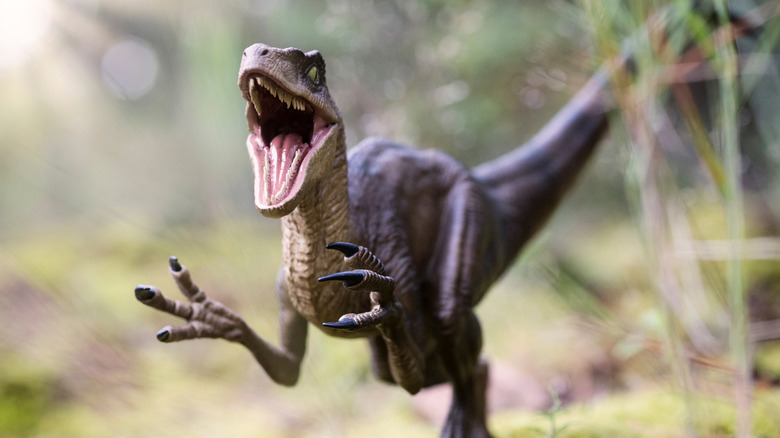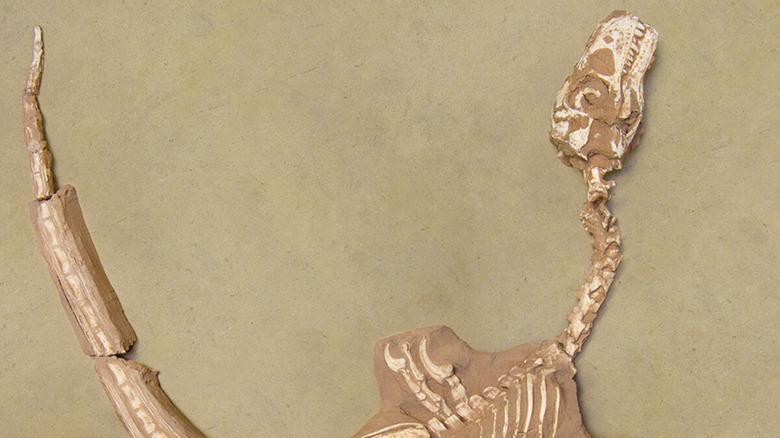This New Dinosaur Had An Even Stronger Bite Than The Velociraptor
Popular media like "Jurassic Park" might have made velociraptors the go-to for dinosaur fans, but the clever creatures capable of opening doors in Michael Crichton's science fiction-horror novel are far from the only raptor that has ever walked the Earth. In fact, the velociraptor that many of us know and love is very far from what the actual dinosaur was, with the raptor in the movies believed to be based more around a larger member of its species called a deinonychus.
These two creatures, along with the utahraptor, are part of a family of dinosaurs known as dromaeosaurs. While the real-life velociraptor was no doubt deadly in its own right, it likely didn't operate the way media has portrayed it. For starters, it wasn't as scaly as "Jurassic Park" shows it, and raptors likely didn't hunt in packs. We've slowly been learning more about raptors as a whole, with scientists even unearthing new raptor-like skeletons in unexpected places within the past few years.
Now, though, researchers behind a new study in Historical Biology say they've identified a new member of the iconic animal's family, and this one is unlike any raptor we've ever seen before. Discovered sometime before 2010 — when it was excavated and stolen from Mongolia's Gobi Desert by fossil poachers — this new creature has finally returned home with a name: Shri rapax.
A raptor with sharper claws and a stronger bite
What sets the shri rapax apart from other members of the dromaeosaur family, including the velociraptor, is that it has sharper claws and likely had a stronger bite compared to other raptors we've uncovered over the years. These likely differences were thanks to a shorter snout, as well as stouter hands — both of which imply the shri rapax could attack its prey with more strength than the velociraptor.
The creature appears to have been around the size of a turkey and was roughly six feet long, and wandered the Earth more than 71 million years ago. The skeleton of the beast also has a bit of a unique story behind it compared to some finds, as it was smuggled out of Mongolia and sold on the black market.
That isn't exactly all that surprising, given the nature of the black market and how much these fossils can sell for — we've even seen some expert forgeries that were marketed as new species. But the skeleton eventually ended up in the hands of Eldonia, a French fossil company. One of the fossil's owners had parts of the skeleton scanned, including the skull, though the head and neck later went missing, according to National Geographic's report on the naming. Neither have been found to this day, but the skeleton has been returned to Mongolia, where it can be studied and cared for as it deserves.
These scans are what allowed scientists to study the skull closer, as they were able to create a new cast of the skull using the scan.

